Porto-North-Portugal.com
The best independent guide to north Portugal
Porto-North-Portugal.com
The best independent guide to north Portugal
Day trip to Viana do Castelo and a 1-day self-guided walking tour
Viana do Castelo is one of northern Portugal's most fascinating coastal cities, where maritime heritage meets stunning natural beauty. This charming destination sits at the mouth of the Lima River, perfectly positioned between dramatic Atlantic beaches and the verdant hills of the Minho region.
The city combines a rich historical centre filled with Renaissance palaces and baroque churches with a working port that still maintains its shipbuilding and fishing traditions. Above it all, the gleaming white Santuário de Santa Luzia watches over the city from its hilltop perch, offering some of the finest views in Portugal.
Viana do Castelo rewards visitors with an authentic Portuguese experience that's refreshingly free from mass tourism. Its compact historic centre, fascinating museums, beautiful beaches and excellent restaurants make it an ideal destination for a rewarding day trip from Porto.
This guide provides everything you need for the perfect day trip to Viana do Castelo. The first section covers practical details, transport options and dining recommendations, while the second section offers a detailed self-guided walking tour of the city's highlights.
Related articles: Day trips from Porto
Highlights of a day trip to Viana do Castelo
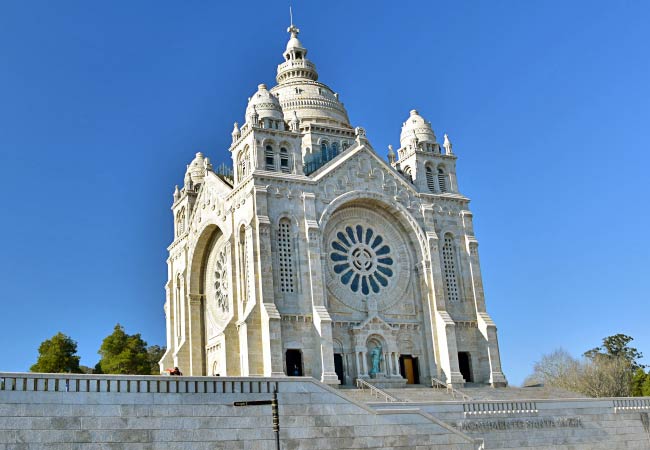
Santuário de Santa Luzia - The magnificent neo-Byzantine basilica that crowns Monte de Santa Luzia, inspired by Paris's Sacré-Cœur. The panoramic views from its dome encompass the city, river estuary and Atlantic coastline in a breathtaking 360-degree sweep.

Gil Eannes Hospital Ship - This meticulously restored 1950s vessel served Portugal's Atlantic cod fishing fleet as a floating hospital. Now a fascinating museum, visitors can explore everything from the operating theatre to the engine room.
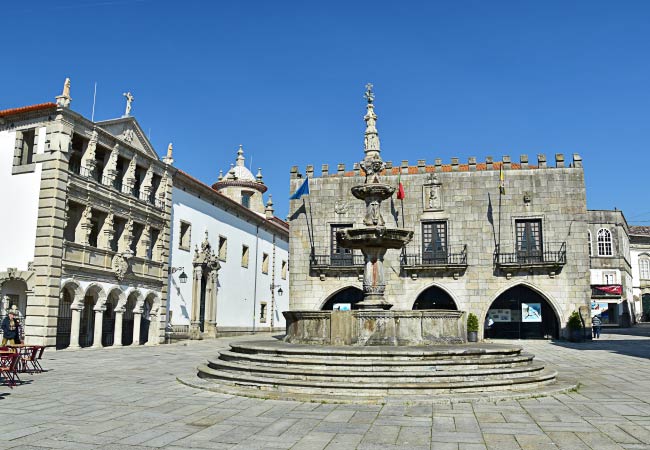
Praça da República - The heart of Viana do Castelo's historic centre, this beautiful square showcases Renaissance architecture, including the ornate 16th-century fountain and the former town hall with its distinctive Gothic arches.
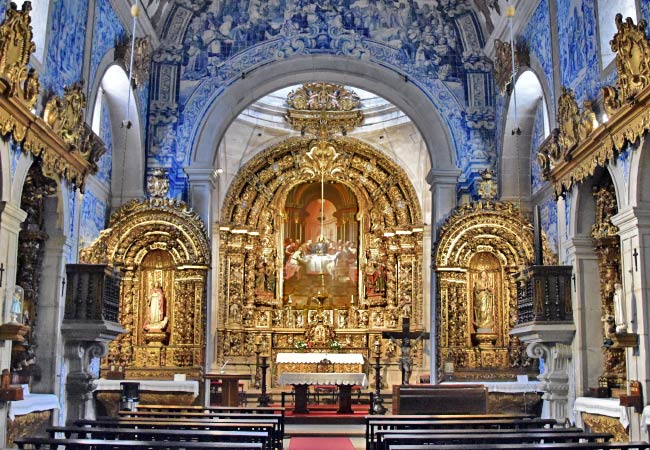
Igreja da Misericórdia - Behind an understated façade lies one of Portugal's most stunning church interiors, with walls completely covered in blue and white azulejo tiles depicting biblical scenes.
A suggested 1-day tour of Viana do Castelo
Below is an interactive map for our suggested 1-day tour of Viana do Castelo. The tour route starts from the train station and the suggested tour (green line) of the historic centre is 4.8km long. The second part of the day trip involves riding the funicular up to the Santuário de Santa Luzia and could also include visiting the Citânia Santa Luzia.
Legend: 1) Museu do Traje 2) Praça da República 3) Igreja da Misericórdia 4) Sé Catedral 5) Ponte Eiffel 6) Monumento ao 25 de Abril 7) Centro Cultural 8) Gil Eannes 9) Forte Santiago da Barra 10) Capela de Nossa Senhora da Agonia 11) Igreja de São Domingos 12) Elevador de Santa Luzia 13) Santuário de Santa Luzia 14) Citânia Santa Luzia 15) Praia Norte 16) Praia do Cabedelo
Note: On Monday, all of the city’s museums are shut, so it is advisable not to visit Viana do Castelo on this day
Travel to Viana do Castelo for a Day Trip
Getting to Viana do Castelo from Porto is straightforward, with several transport options to suit different budgets and preferences.
By Train
The train remains the most popular choice for independent travellers. Services run regularly from Porto's Campanhã station throughout the day. There are a variety of services and connections, but the direct option is the InterRegional (IR) train, which costs €8.70 for an adult single or €15.70 for a return.
For a day trip from Porto, the most convenient service departs Campanhã station at 08:50, arriving 1h 34m later (at 10:24) in Viana do Castelo. For your return journey, plan to catch the direct InterRegional train, which has at least two departures in the afternoon. Always check current timetables, as services can be reduced on Sundays and public holidays.
For the latest schedule, visit the Comboios de Portugal (CP) website: www.cp.pt
Insight: Many train journeys between Porto and Viana do Castelo require a connection at Nine station. This is where the line divides, with one branch going to Braga, which is on the main express route. The Braga-Porto route has Urban, Intercity and Alfa Pendular trains, each with its own fare structure (and fines if you have the wrong ticket). For simplicity, it's best to take the direct InterRegional (IR) train between Porto and Viana do Castelo.
Viana do Castelo station is located about 800 metres north of the historic centre (GPS: 41.695, -8.831), which is roughly a 10-minute walk to the waterfront.
By Car
If you're driving, Viana do Castelo is easily reached via the A28 coastal motorway from Porto. The 75km journey takes about 50 minutes. Exit at junction 8 (Viana do Castelo Norte) and follow signs for the city centre.
The most convenient option is the free car park, Estacionamento Gil Eannes (GPS: 41.689, -8.831), but be aware that it fills up quickly. There is alternative paid underground parking at Praça da Liberdade. Street parking in the historic centre is very limited and not recommended.
By Uber or Bolt
If you prefer door-to-door convenience, ride-hailing apps offer an excellent alternative. Both Uber and Bolt operate in the region, with typical fares of €35-45 for the journey from Porto to Viana do Castelo. This option becomes cost-effective for groups of three to four people and eliminates the need to coordinate with public transport schedules. The journey time is around 50 minutes, comparable to driving yourself.
A suggested walking tour of Viana do Castelo
This walking tour covers all of Viana do Castelo's essential sights following a logical route that minimises backtracking while showcasing the city's diverse attractions. The complete circuit covers approximately 5km (excluding the optional beach visits) and takes 4-5 hours at a comfortable pace, including time for the museums and lunch.
The tour naturally divides into three sections: the historic centre, the waterfront and port area, and the ascent to Monte de Santa Luzia. The green route on the map shows the main walking tour, with the yellow section indicating the optional Santa Luzia section.
Begin your exploration at Viana do Castelo train station. Exit the station and following Avenida dos Combatentes da Grande Guerra southward. This broad avenue, lined with plane trees and early 20th-century buildings, provides a gentle introduction to the city. The 10-minute walk to the historic centre passes several cafés perfect for a quick coffee if you arrived on an early train.
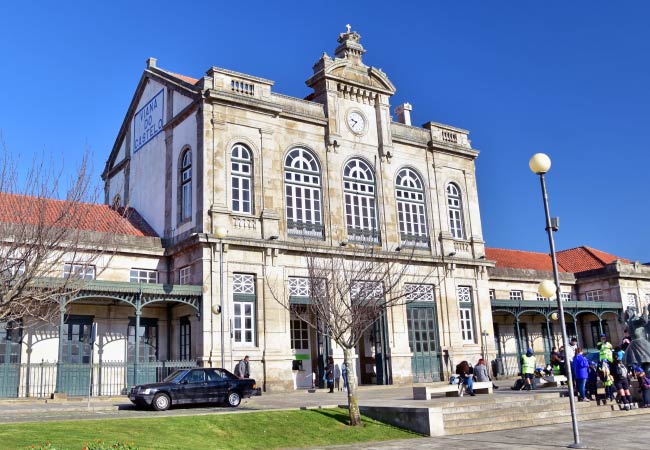
Viana do Castelo train station
Your first cultural stop is the Museu do Traje (1) housed in a former bank building on Praça da República. This fascinating museum shows the elaborate traditional costumes of the Minho region, famous throughout Portugal for their intricate embroidery and striking use of gold filigree jewellery. The collection includes remarkable examples of festival wear, with some costumes containing several kilos of gold.
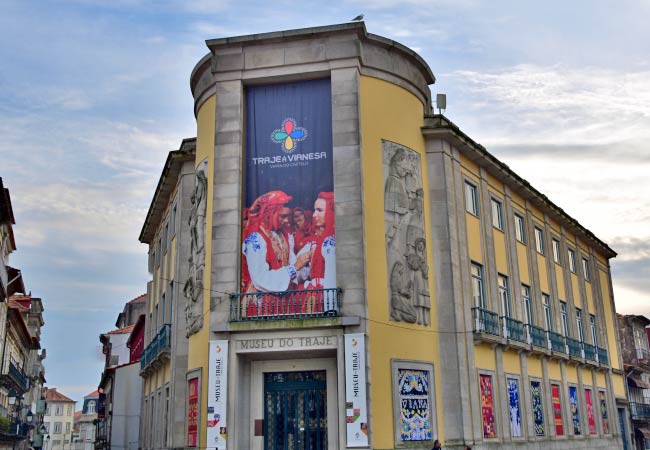
The Praça da República (2) is Viana do Castelo's magnificent main square and the perfect introduction to the city's Renaissance splendour. The square's centrepiece is the beautiful 16th-century Chafariz fountain, its multiple water spouts topped by an armillary sphere and cross symbolising Portugal's maritime empire.
Surrounding the square, you'll find some of Viana do Castelo's most important historic buildings. The old Paços do Concelho (former town hall) displays classic Manueline windows, while the arched ground floor once served as the town's covered market.
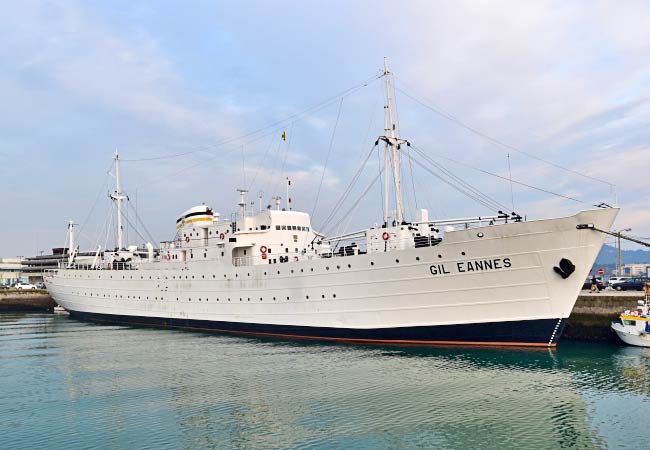
The Praça da República is the main square of Viana do Castelo
The square's most impressive building is the Igreja da Misericórdia (3) whose relatively modest Renaissance façade gives no hint of the spectacular interior within. Built in 1589, this church contains one of Portugal's most breathtaking displays of azulejo tiles. The walls are entirely covered with blue and white tiles depicting scenes from the life of Christ, creating an overwhelming visual impact. The ceiling features elaborate painted panels, while the altar showcases fine gilded woodwork.

The spectacular interior of the Igreja da Misericordia church
From the square, follow Rua Sacadura Cabral eastward for two minutes to reach the Sé Catedral (4). This fortress-like church, also known as Igreja Matriz, dates from the 15th century and exemplifies the Gothic style favoured in northern Portugal. The facade features two robust towers framing a beautiful rose window, while the Romanesque portal displays intricate stone carvings of apostles and saints. Inside, the austere Gothic interior contrasts sharply with the ornate Misericórdia church.
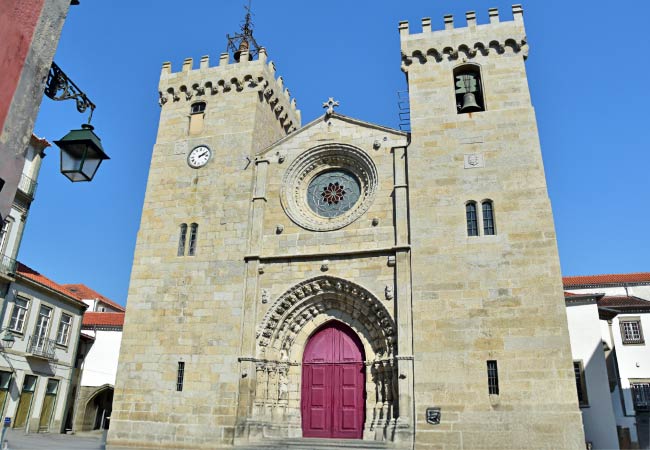
The ancient Se cathedral
To the Waterfront
Retrace your steps to Praça da República and continue west along Rua Manuel Espregueira, then turn south towards the river. The streets here maintain their traditional character with small shops, family-run businesses, and houses adorned with decorative tiles and wrought-iron balconies.
You'll soon reach the riverfront and the unmistakable Ponte Eiffel (5), a two-level iron bridge spanning the Lima River. Designed by Gustave Eiffel's company and completed in 1878, this engineering marvel carries both road traffic on its lower level and the railway line above. The bridge stretches 562 metres across the river, its latticed ironwork creating fascinating geometric patterns.
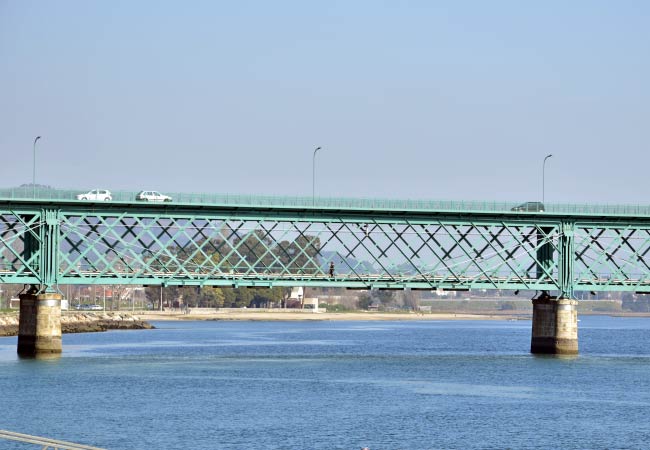
Walking west along the modern waterfront promenade, you'll encounter the striking Monumento ao 25 de Abril (6) in Praça da Liberdade. This unusual rusting steel sculpture commemorates the 1974 Carnation Revolution that ended Portugal's dictatorship. The broken chains symbolise freedom from oppression, though strong Atlantic winds forced the removal of most hanging sections, leaving just two loops suspended above and the remainder arranged on the ground.
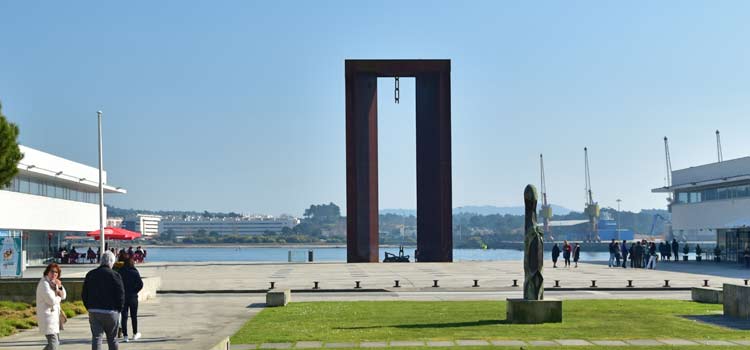
The modernist Centro Cultural (7) designed by Eduardo Souto de Moura, demonstrates how contemporary architecture can complement historic settings. Its clean lines and use of local granite create a dialogue with the traditional buildings nearby. The adjacent Biblioteca Municipal by Álvaro Siza Vieira continues this architectural conversation.
Maritime Heritage
The waterfront's main attraction is the Gil Eannes (8) a hospital ship moored at the commercial dock. Built in Viana do Castelo's shipyards in 1955, this vessel served as a floating hospital supporting Portugal's cod fishing fleet in the treacherous North Atlantic. The ship has been lovingly restored and offers a fascinating glimpse into this little-known aspect of maritime history.

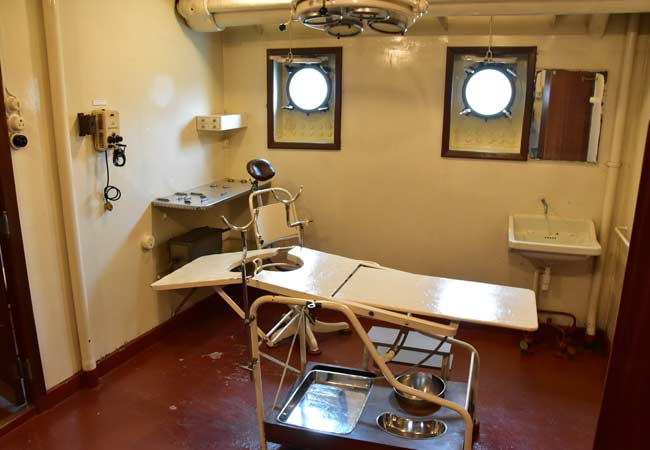
The operating room was at the lowest point of the ship, to have the least movement during rough seas
Visitors can explore four decks, from the bridge with its brass instruments and wooden wheel to the engine room with its massive diesel engines. The hospital facilities are particularly compelling, the operating theatre, complete with surgical instruments secured against ocean swells, brings home the reality of performing surgery in rough seas. The ship also includes quirky details like the ship's barber shop and the chapel, essential facilities for crews spending months at sea.
Continue west through the working port area, where Viana do Castelo's shipbuilding industry continues to thrive. Modern vessels under construction dwarf the small fishing boats, demonstrating the city's ongoing maritime importance. The contrast between gleaming yachts and weathered trawlers tells the story of Portugal's evolving relationship with the sea.
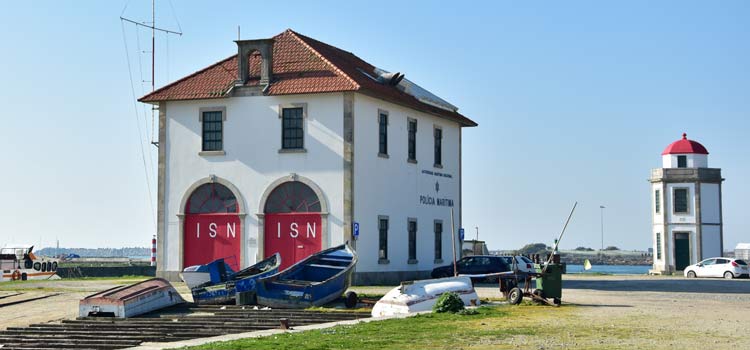
At the river mouth stands the star-shaped Forte de Santiago da Barra (9) a 16th-century fortress built to defend against pirates and foreign invaders. While the exterior can be admired from outside, the low-lying fortification offers excellent views across the river mouth to the beaches beyond.
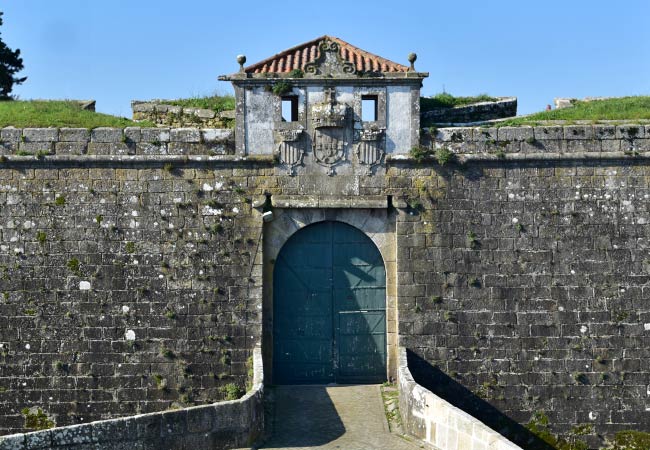
From the fort, turn inland through the Jardim Dom Fernando towards the fishing quarter. Here you'll find the Capela de Nossa Senhora da Agonia (10) a small baroque chapel housing the image of Our Lady of Agony, patron saint of fishermen. During the August festival, this normally quiet chapel becomes the focus of intense devotion as the statue is carried through streets packed with worshippers in traditional costume.
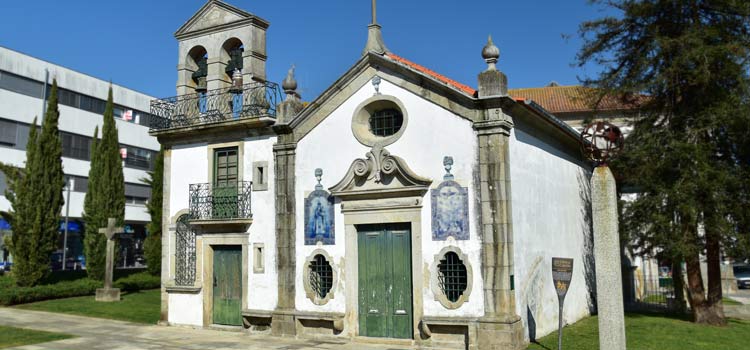
The baroque Capela das Almas church
Continue east through the historic streets to reach Igreja de São Domingos (11) an impressive baroque church with an elaborate granite façade. Built in the 16th century, the church features beautiful azulejo panels and carved altarpieces.
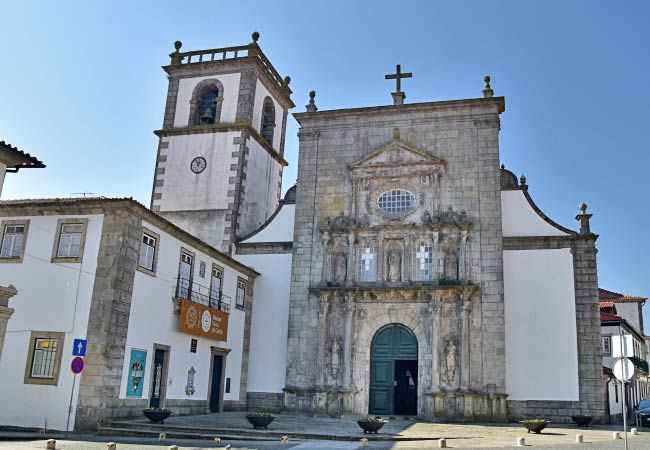
Ascending to Santa Luzia
From São Domingos, make your way back towards the train station area to catch the Elevador de Santa Luzia (12). This funicular railway, opened in 1923, saves you a steep 250-metre climb with over 650 steps. The seven-minute journey offers increasingly spectacular views as you ascend through eucalyptus and pine forests.
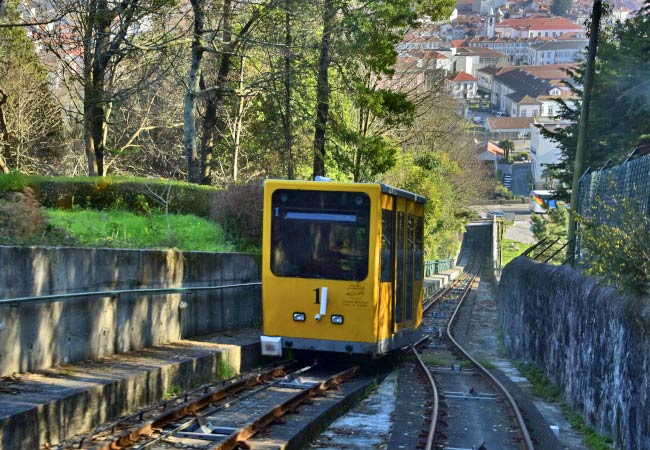
At the summit, the Santuário de Santa Luzia (13) commands attention with its distinctive Byzantine-inspired domes and rose windows. Begun in 1898 and inspired by Sacré-Cœur in Paris, this neo-Byzantine basilica took over 40 years to complete. The interior impresses with its soaring central dome, beautiful rose windows casting coloured light across granite columns, and intricate geometric patterns.
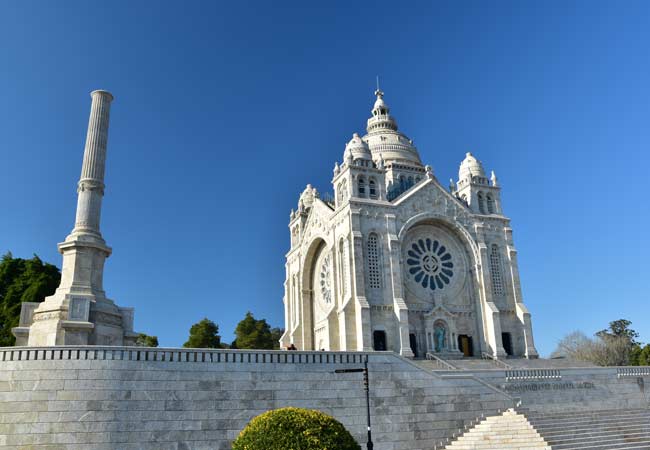
The real highlight is climbing to the dome's cupola (additional €2) for quite possibly the finest panoramic view in northern Portugal. The climb involves narrow staircases and tight spaces, but the 360-degree vista encompasses the Atlantic Ocean, the Lima estuary winding inland, the geometric patterns of the city below, and the green mountains of the Minho region.
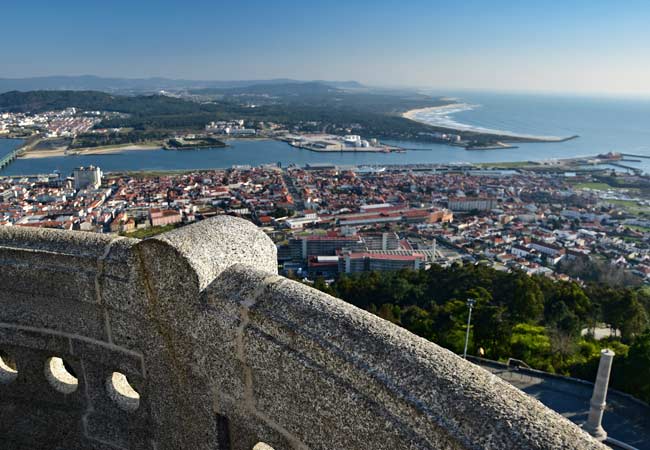
Behind the sanctuary, a woodland path leads to the Citânia de Santa Luzia (14) the remains of a Celtic-Roman settlement dating from the 4th century BC. The site preserves the circular stone foundations of ancient houses, defensive walls, and paved streets. Information panels help interpret these atmospheric ruins, which offer a fascinating glimpse into pre-Roman Iberia.
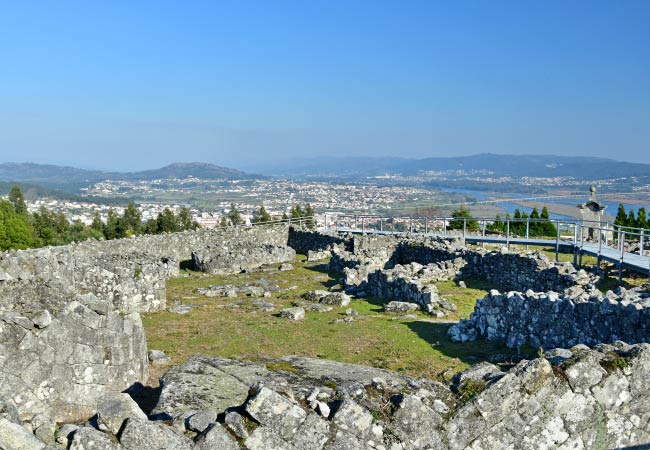
The Citânia de Santa Luzia ruins
Optional Beach Visits
Time and energy permitting, Viana do Castelo's beaches provide a refreshing conclusion to your day. Praia Norte (15) lies within walking distance of the city centre, though it's a good 20-minute trek from the historic quarter. This urban beach has been transformed with modern facilities including beach bars and restaurants.
The superior Praia do Cabedelo (16) requires taking the small ferry from the dock near Gil Eannes (€1.50 return, hourly departures). This Blue Flag beach stretches for kilometres, backed by protected dunes and pine forests. The reliable winds make it popular with kitesurfers and windsurfers, while beach bars provide refreshments during summer months.
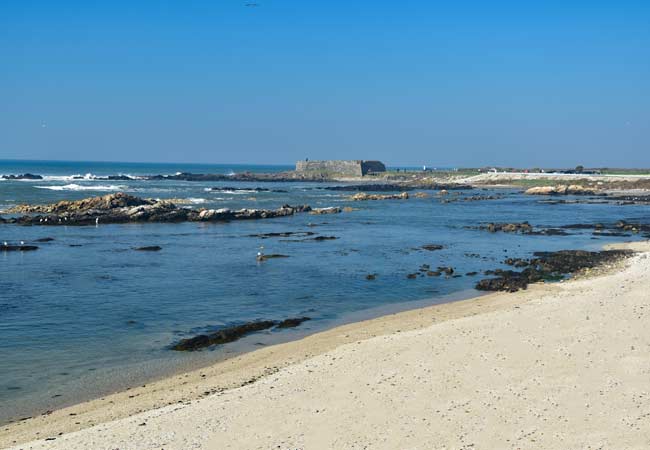
If you've found our content valuable, we'd welcome your support.
The digital publishing landscape has evolved significantly. As a small independent publisher, we face growing challenges. Search engines increasingly favour paid content over organic results, while AI-generated content often reproduces original work without attribution.
To support our work, please consider bookmarking this page (press Ctrl + D) for quick access. If you find an article helpful, we'd be grateful if you'd share it with friends on social media.
For specific questions, please see our Reddit community at r/LisbonPortugalTravel.
Should you notice any outdated or incorrect information, please contact us at [email protected]
Thank you for helping us continue to provide valuable content in an increasingly challenging digital environment.



























